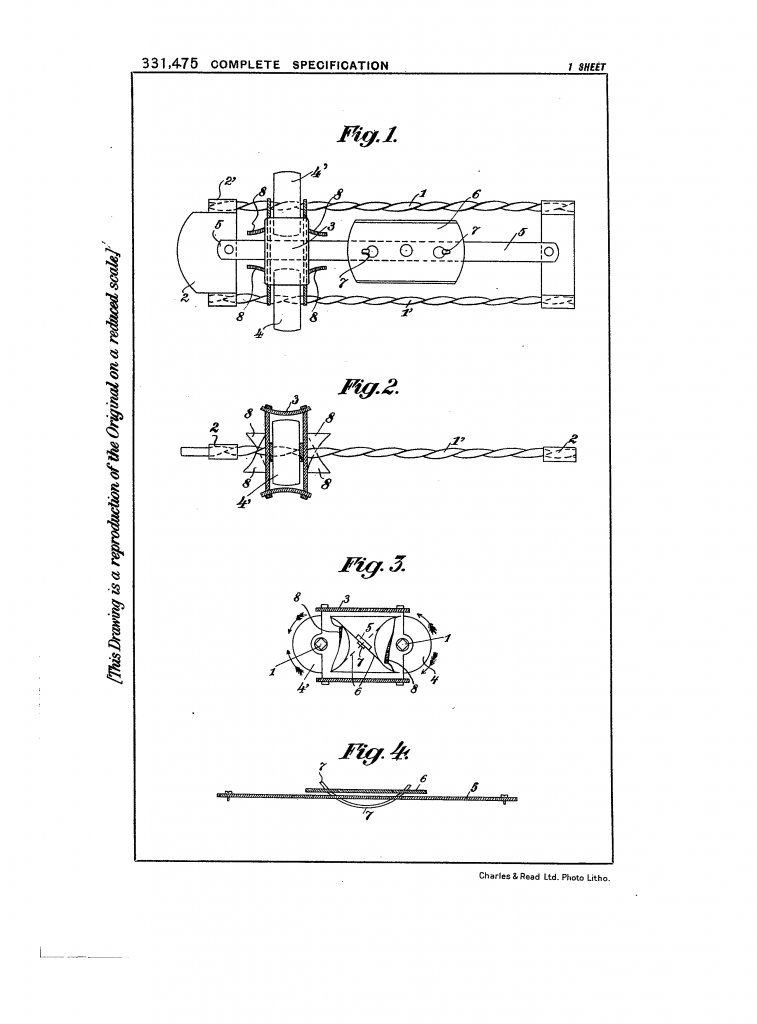Over the years I’ve showcased quite a few razor blade sharpeners.1 One I have not showed yet is the Sharpex patent from 1930. I do actually own a surviving example, but it is in rough shape.
As for the why of sharpeners, I have touched upon it before. It boils down to the carbon steel blades of yesteryear not staying sharp as long as modern blades, and blades were relatively costly to replace. Keeping your blade sharp for longer meant saving money as well as getting a better shave.
The Sharpex patent was filed shortly after 1930 started, and was granted a little over a half year later.2 While fairly simple in concept and cheap in manufacture, the Sharpex must have had some mass market appeal.
The Sharpex frame consists of two parallel, twisted, square rods. Between these two rods there is a flexible strip of metal, which the razor blade can be mounted onto. And on the rods there is a small carriage riding, in such a way that two grinding rollers are rotated by the rods.
Or as the patent description puts it:
The grinding device comprises a pair of rods 1 and 11 which are connected to end plates 2 in a parallel position. The rods are of angular, preferably square crosssection, and they are twisted so as to form screws. Grinding rollers 4 and 41 are mounted on the rods by means of axial apertures of the same shape as the crosssection of the rods. Thus the rollers, on being axially displaced on the rods, will be rotated by the latter. The rollers are enclosed in a frame 3 whereby they can be reciprocated on the rods and thus rotated.
From Great British patent 331,475
The frame holding the rollers also have four shaped ramps, which serves to move the blade in the correct orientation as the rollers go past. So as the carriage is pulled one way, one side of the blade is sharpened. And when the frame is pulled the other way, the other side of the blade are sharpened.

As mentioned, I am lucky enough to own a Sharpex. This means can riff on not only the patent, but on the manufactured product as well – although a few decades after manufacture. But first, let us have a closer look at at a 90 year old3 Sharpex.













A few general observations first. The Sharpex is of fairly inexpensive construction. The frame and rods is a piece of square wire, twisted and bent. The black end piece is made out of two identical stamped sheet metal pieces, pressed around the wire. The flexible strip down the middle is just a steel band, kept in place with two tiny rivets. The moving frame holding the rollers are also made from two pieces of sheet metal. The frame is held together by four little bent tabs. And whatever material the grinding rollers are made from, time was not kind to it. They are in bad shape, to be blunt.
The use of a couple of hooks and a flat spring for holding the blade might have been an okay choice for the early three hole blade. For a slotted blade it works less good… but I’m not holding that against the Sharpex, since the slotted blade had just got of the drawing boards when it was invented. As can be seen, the hooks tries to slip along the central slot in the blade.
As can be seen from the photos, the ramps on the moving frame will tilt the blade into the proper position as it moves up and down the rods. The twisted rods spins the rollers – although on my example they don’t spin easily any more.4 As the rollers spin, they would ground the blade. A few strokes back and fourth would – hopefully – be enough to turn your dull blade into a sharp one.
You can see the full patent on Epacenet. It is, of course, long expired… but so what? With modern, inexpensive blades there is no market for a razor blade sharpener any more. And if you do own one of these or another vintage razor blade sharpener, please remember that you shouldn’t sharpen modern razor blades. You will take the coating of the blade, opening the way for corrosion and less good shaves.
Footnotes:
- Yes, that is six links. And it’s not half of the razor blade sharpeners I’ve mentioned over the years.
- Amazingly fast, compared to today.
- The exact age is uncertain, since there is no date on it.
- Simply put, wear and tear have made the holes the rods slide through less than square.
